Have you ever felt that growling sensation in your stomach and immediately assumed it was hunger? Maybe you've found yourself reaching for a snack when, in reality, what your body needed was a tall glass of water. The confusion between hunger and thirst is a common occurrence in our daily lives. Let's explore the physical aspects of hunger and thirst, and get tips to tell if you're really hungry or just thirsty.
The Science of Hunger and Thirst
Before we unravel the signals our bodies send us, let's first understand the science behind hunger and thirst. Our brain plays a vital role in comprehending the signals that give rise to two core emotions. These emotions stem from intricate processes within our bodies.
Signs of Hunger
Physical Symptoms of HungerHunger often manifests itself through physical cues that are hard to ignore. You might experience a growling stomach, a slight shakiness, or a distinct sensation of emptiness in your midsection.
Emotional Cues of HungerHunger doesn't stop at physical sensations. It can also influence your mood and cognitive abilities. If you feel irritable, have trouble focusing, or crave certain foods, it means your body needs nourishment.
Signs of Thirst
Physical Symptoms of ThirstRaise your hand if you've experienced a random muscle cramp or if your hands and feet are often cold. It may be because of poor circulation, and one sign could be insufficient water in your body. Thirst is your body's way of telling you it's time to hydrate. Dry mouth, dark urine, and dry skin are other common signs your body needs more fluids.
Emotional Cues of ThirstDehydration doesn't just affect your body physically; it can take a toll on your mental state as well. You might find yourself feeling fatigued, struggling to focus, or even experiencing a headache when you're thirsty.
How Dehydration Can Mimic Hunger
If you're not drinking enough water, your body may trick you into feeling hungry when it actually just needs hydration. Let's dive deeper into this fascinating connection.
Tips for Distinguishing Between Hunger and Thirst
Learning to identify signals of hunger and thirst can be a game-changer for your overall health. Here are some practical tips to help you become more in tune with your body's signals:
- Pay Attention to Physical Cues. One of the first steps in decoding your body's messages is to pay close attention to the physical sensations you experience.
- Listen to Your Body's Signals. Your body has an incredible ability to communicate its needs. It's up to you to tune in and listen.
- Keep a Food and Water Journal. Sometimes, seeing patterns in your eating and drinking habits can reveal valuable insights.
- Practice Mindful Eating and Drinking. Eating slowly and enjoying your food can help you understand what your body really needs at that time.
The Importance of Staying Hydrated
Roughly 60% of our bodies consist of water, which is crucial to almost every bodily function. Proper hydration supports digestion, regulates body temperature, and helps transport essential nutrients throughout the body. Moreover, it aids in the removal of waste and toxins, ensuring our organs and systems function optimally.
Individual hydration needs can vary, so it's essential to pay attention to your body's signals and adjust your water intake accordingly. Staying hydrated is important for our health and should not be overlooked.
Strategies for Staying Hydrated
Now that we've stressed the importance of staying hydrated, let's explore some methods to ensure you consume sufficient water daily.
Try the hydration test. If you feel hungry but just ate, drink a glass of water and wait 15 minutes. If you’re still feeling hungry after drinking water, you may truly be hungry. If the feelings of hunger go away, then it was just thirst.
Set reminders to drink water. In our busy lives, it's easy to forget to drink water. Setting reminders can help you stay on track. Our HidrateSpark smart water bottle and app tracks how much water you drink each day and sends reminders when it's time to drink more.
Include hydrating foods and beverages to your meals. Certain foods and beverages can contribute significantly to your daily fluid intake. Adding these foods into your diet is a quick and easy way to reach your hydration goal.
Drink water before meals. A simple habit like drinking water before a meal can have a positive impact on nutrient absorption and your overall hydration.
Understanding the difference between hunger and thirst can have a great impact on your well-being. Listen to your body, be aware of what you eat and drink, and make sure to stay hydrated. This will help you take care of your body and stay healthy.
Visit the HidrateSpark blog to learn more expert tips and tricks to stay hydrated throughout the day and grab a HidrateSpark water bottle and start kicking thirst...or hunger to the curb.
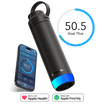
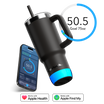


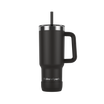

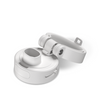
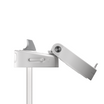


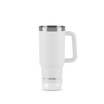
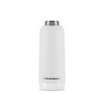
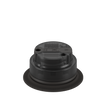
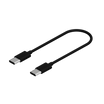




Leave a comment
This site is protected by hCaptcha and the hCaptcha Privacy Policy and Terms of Service apply.